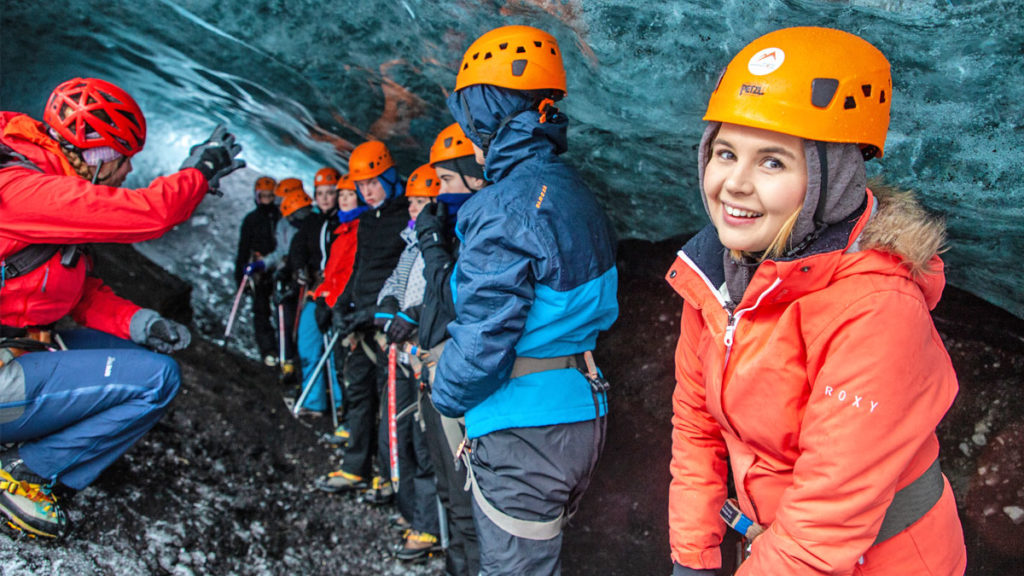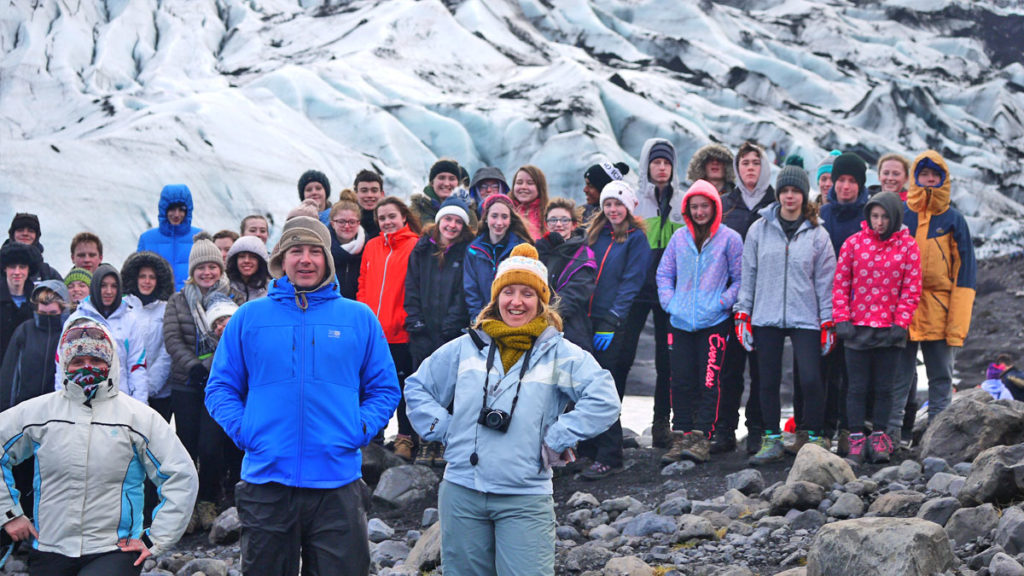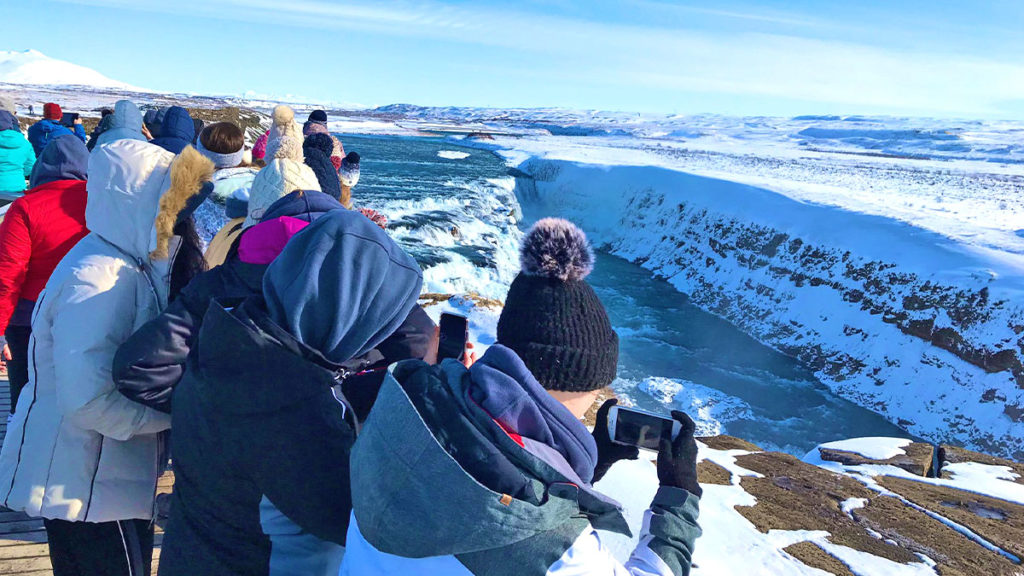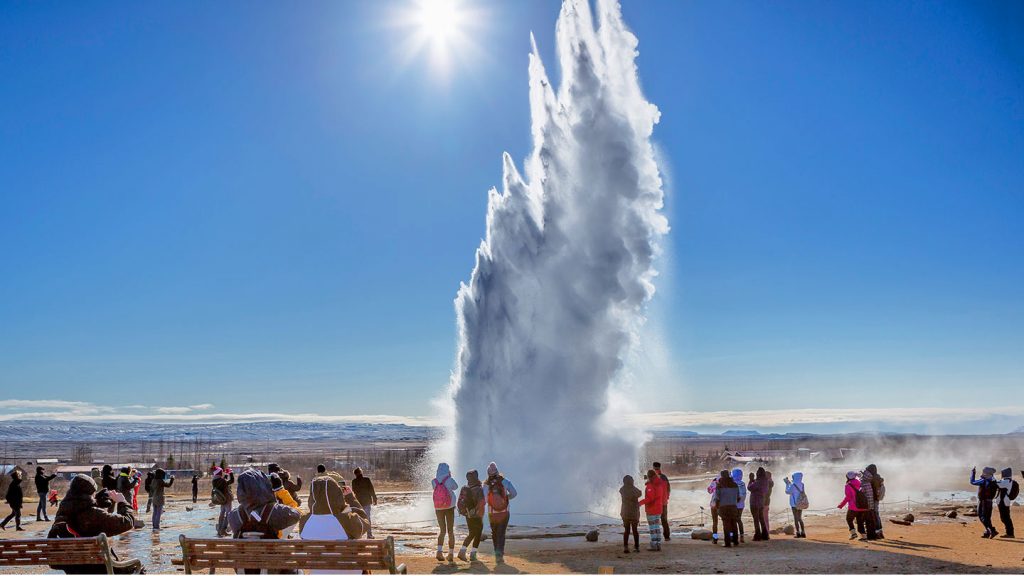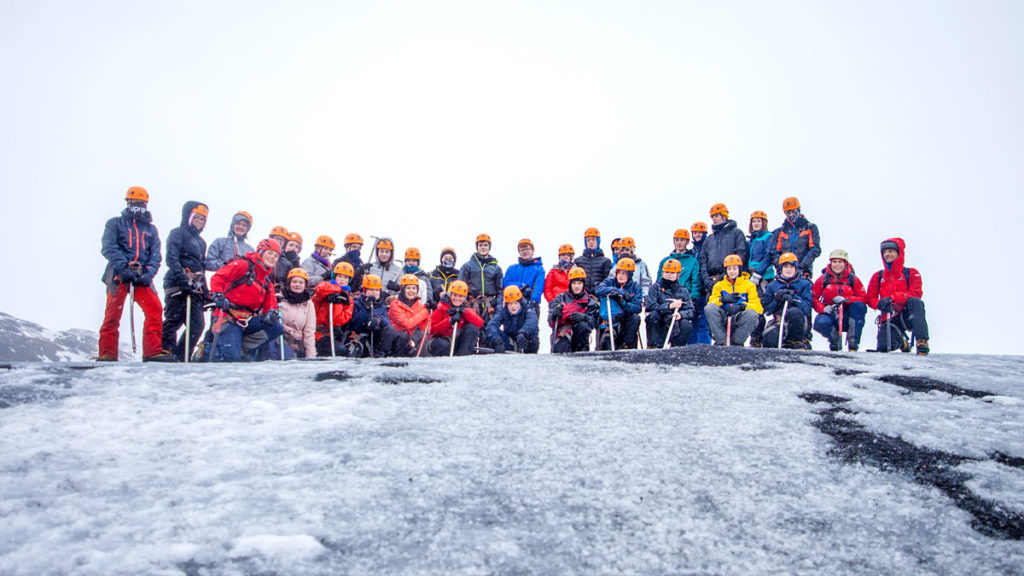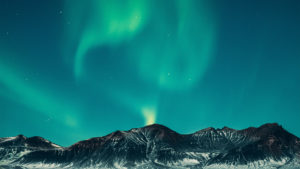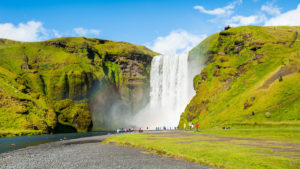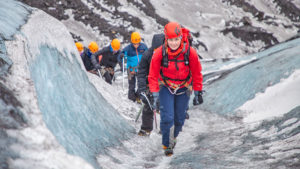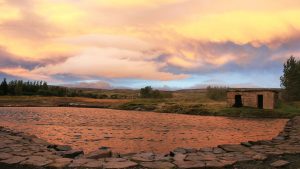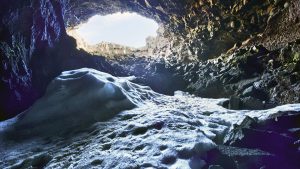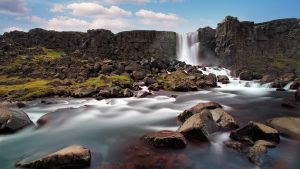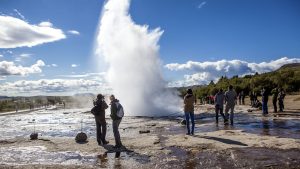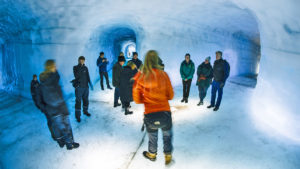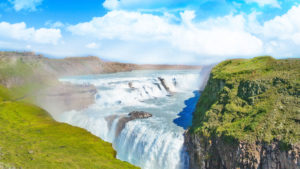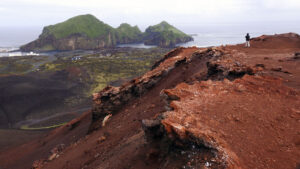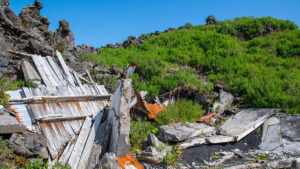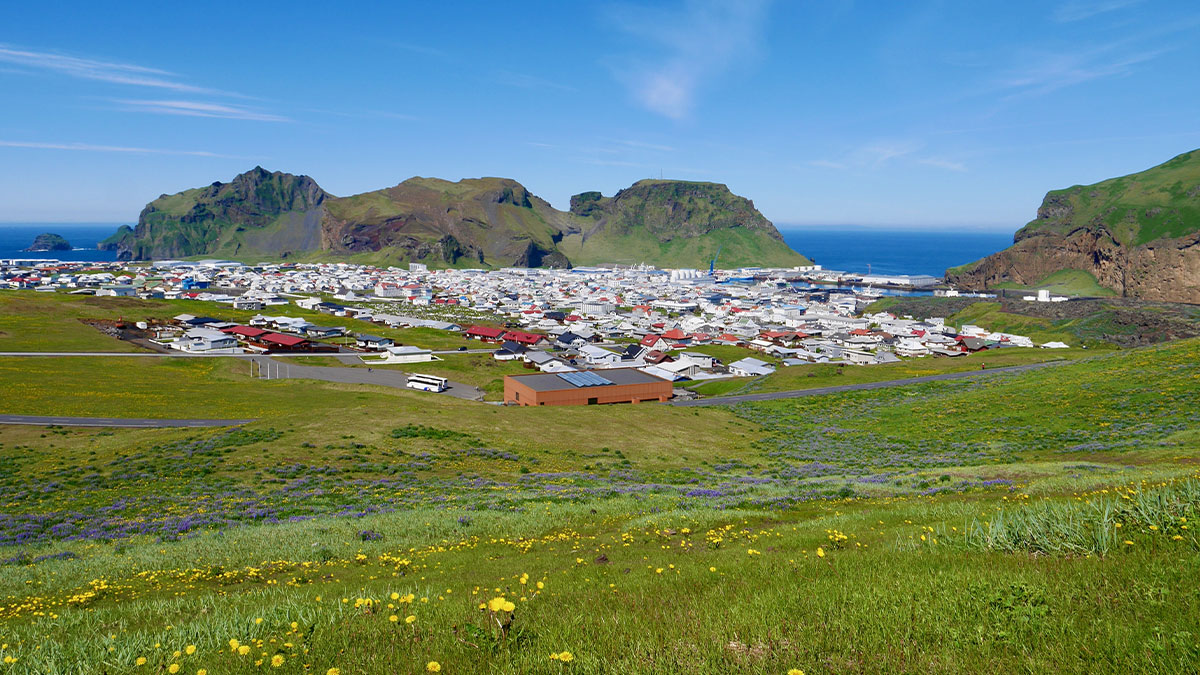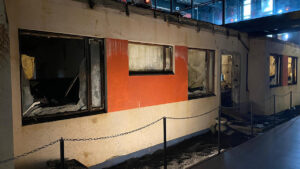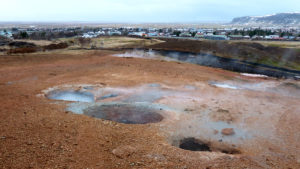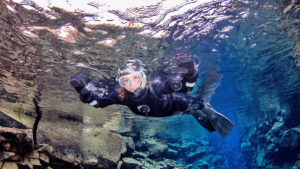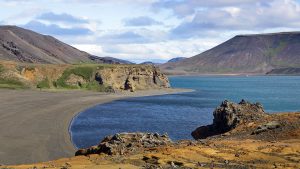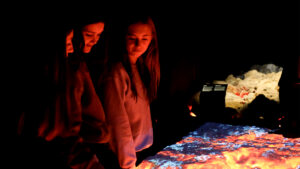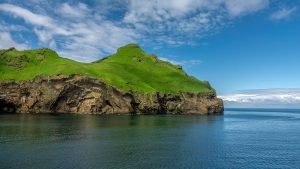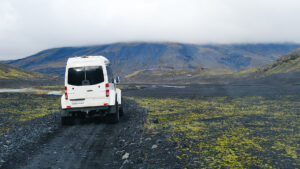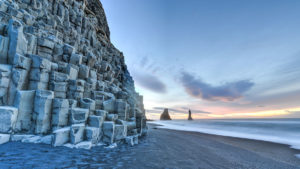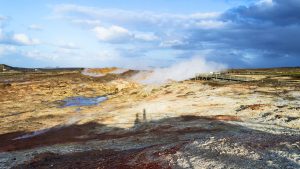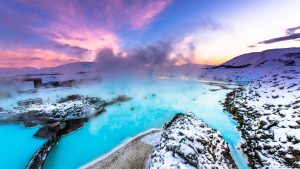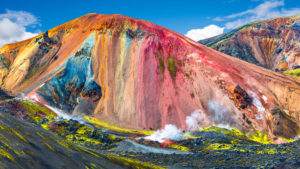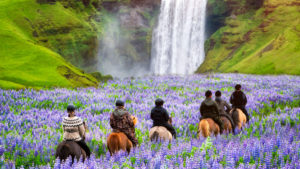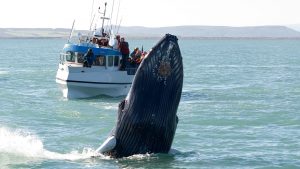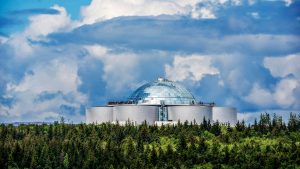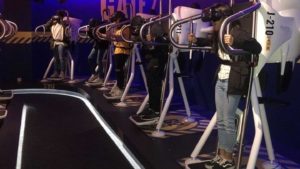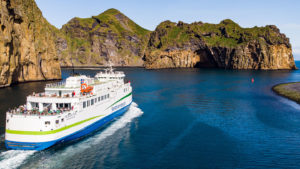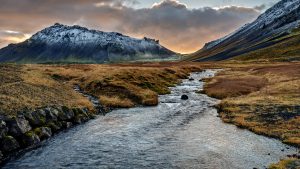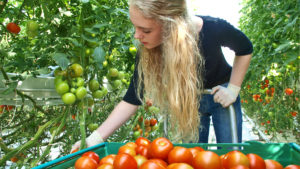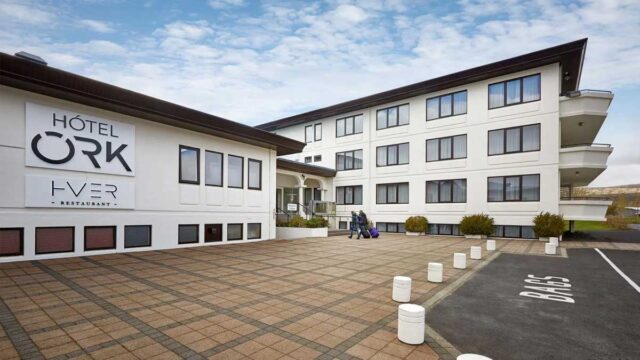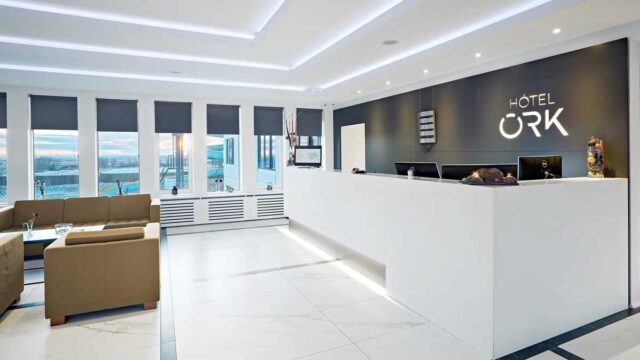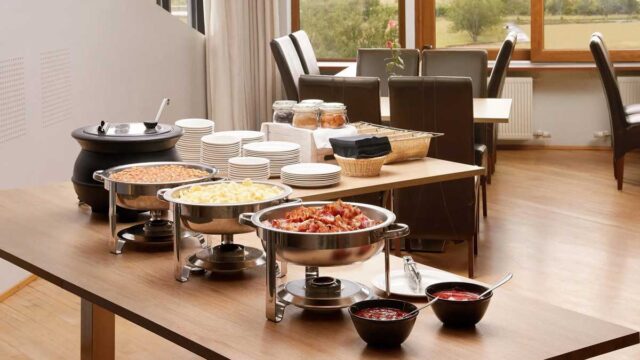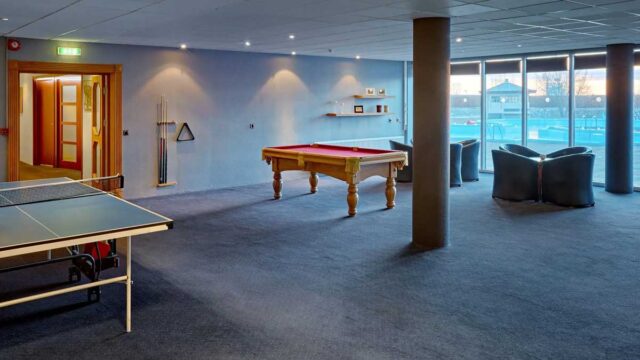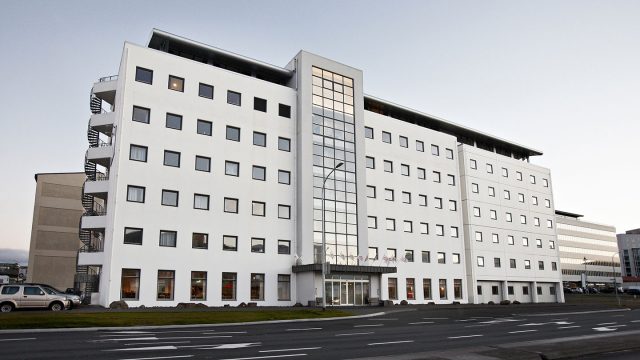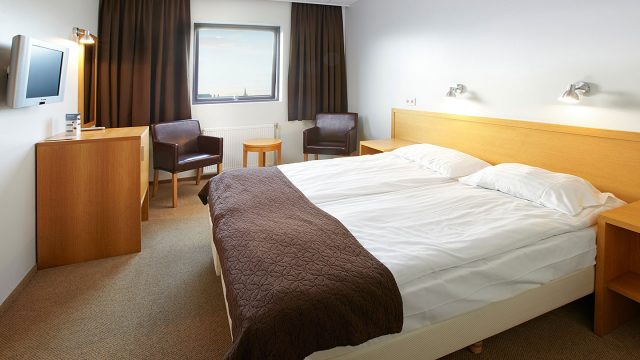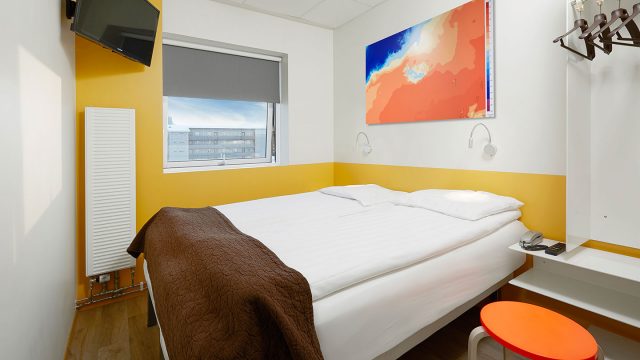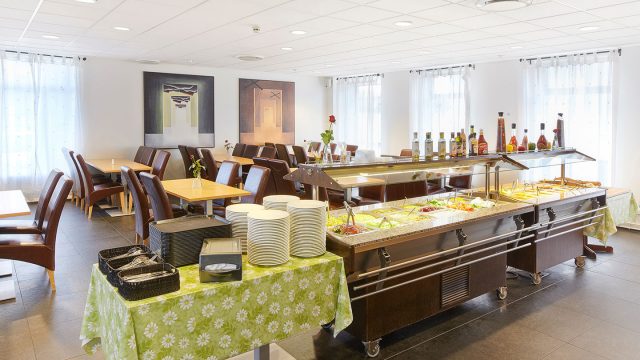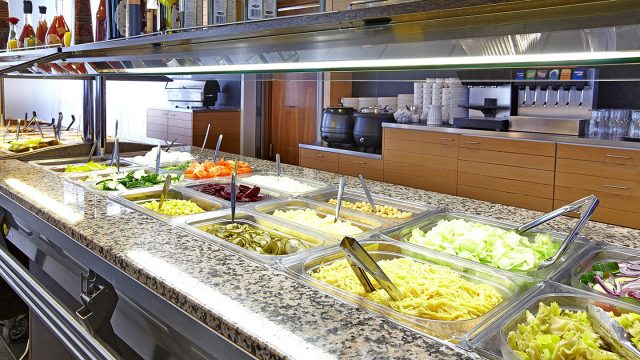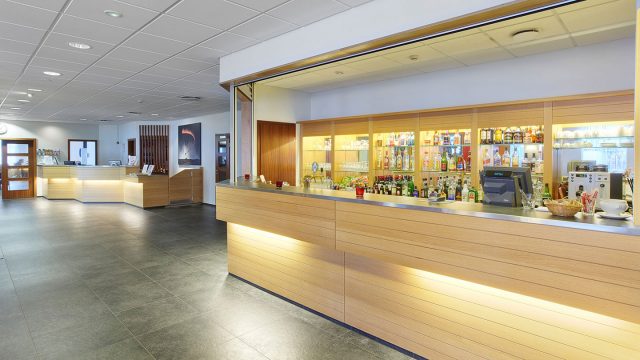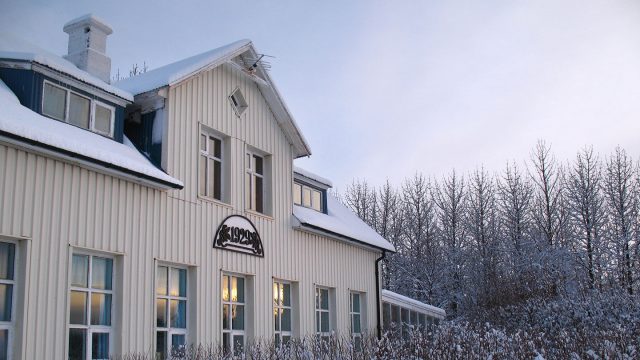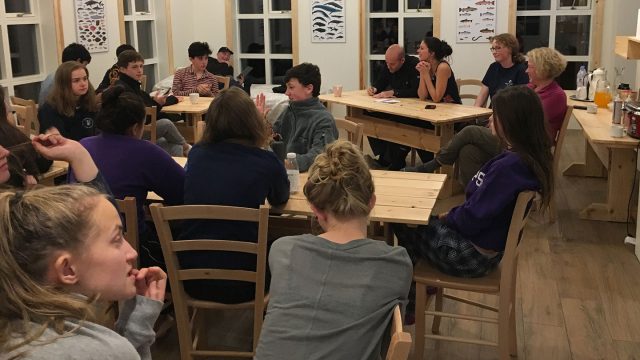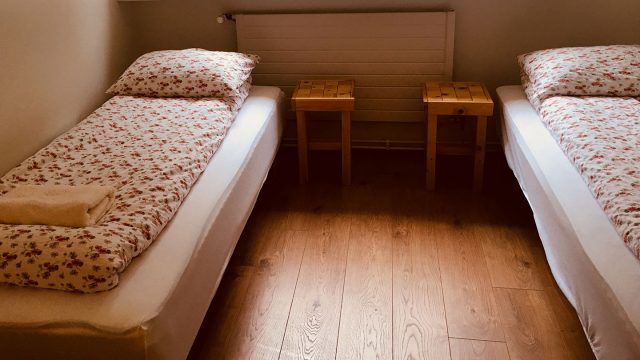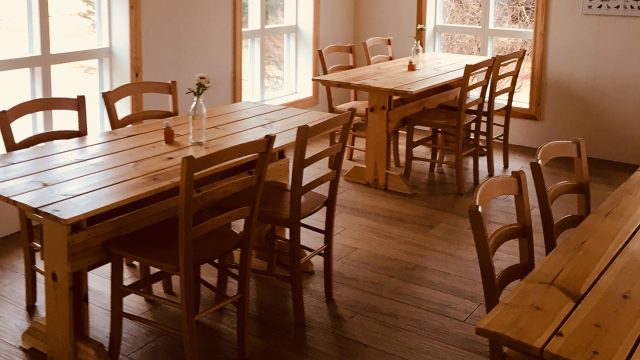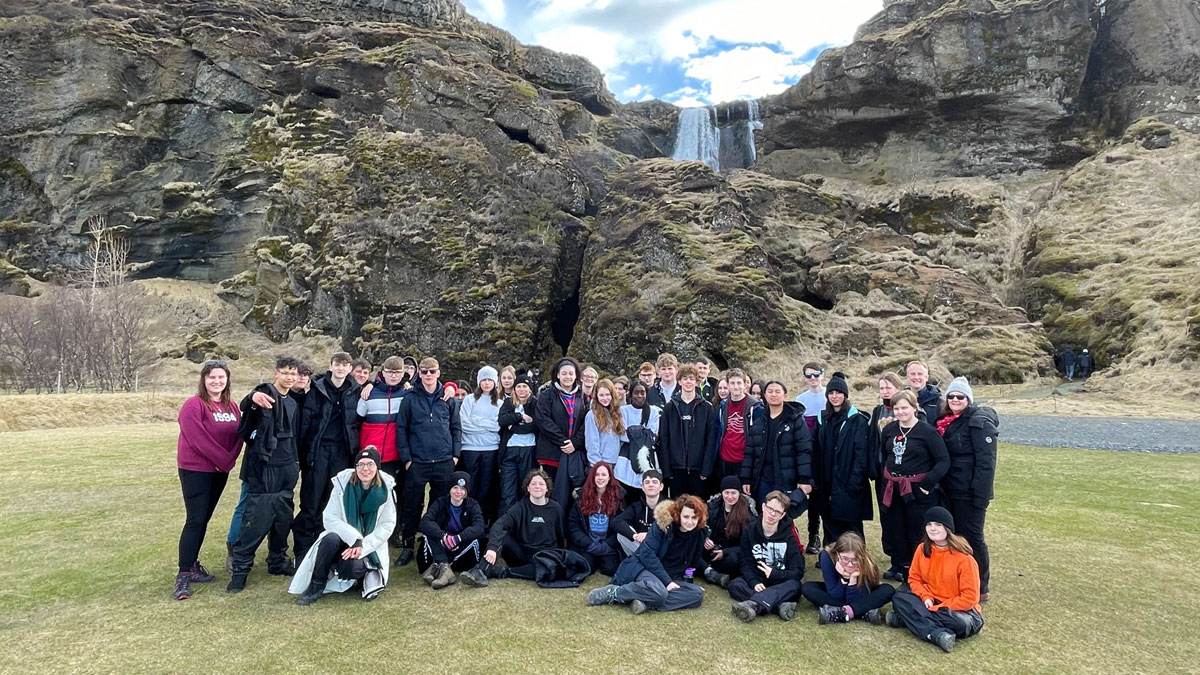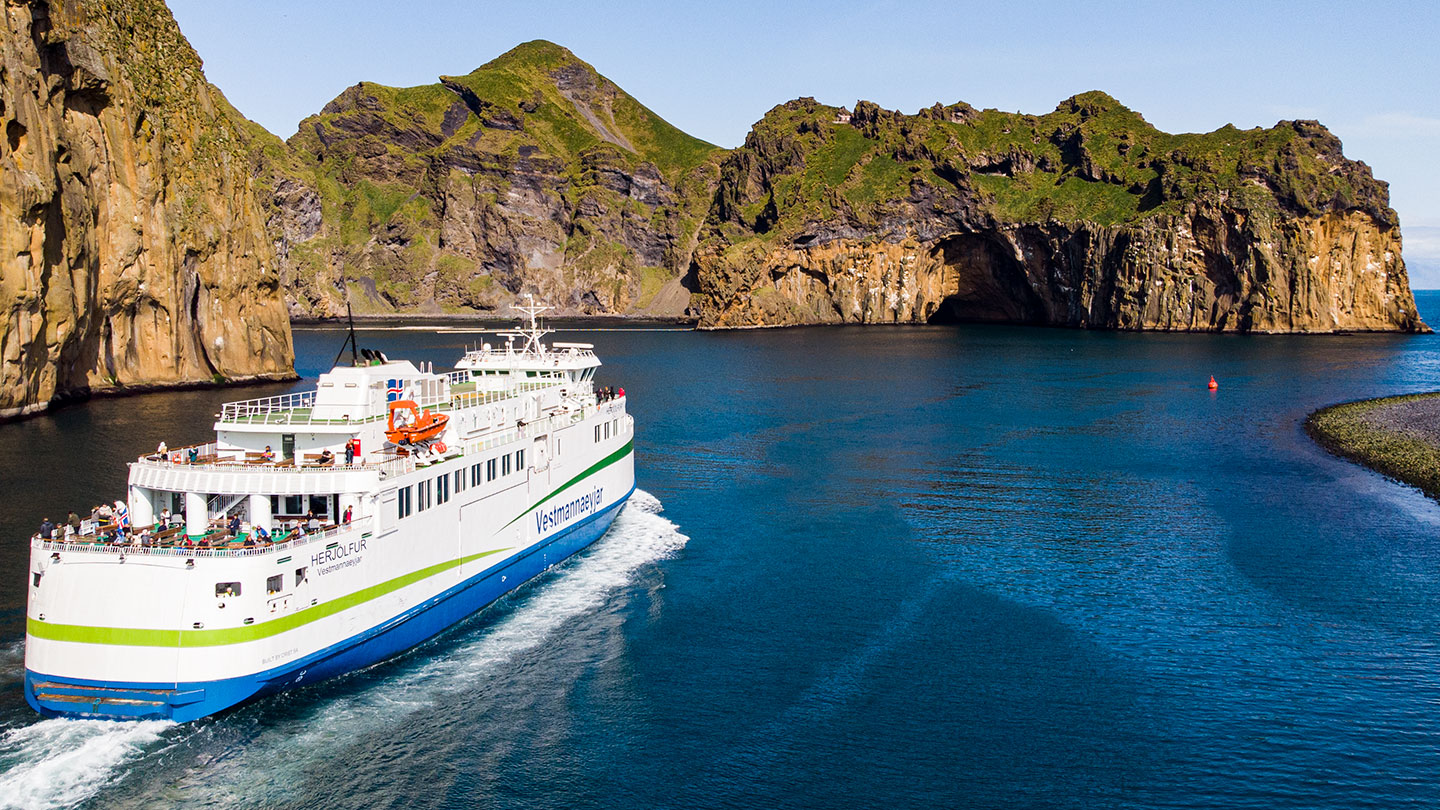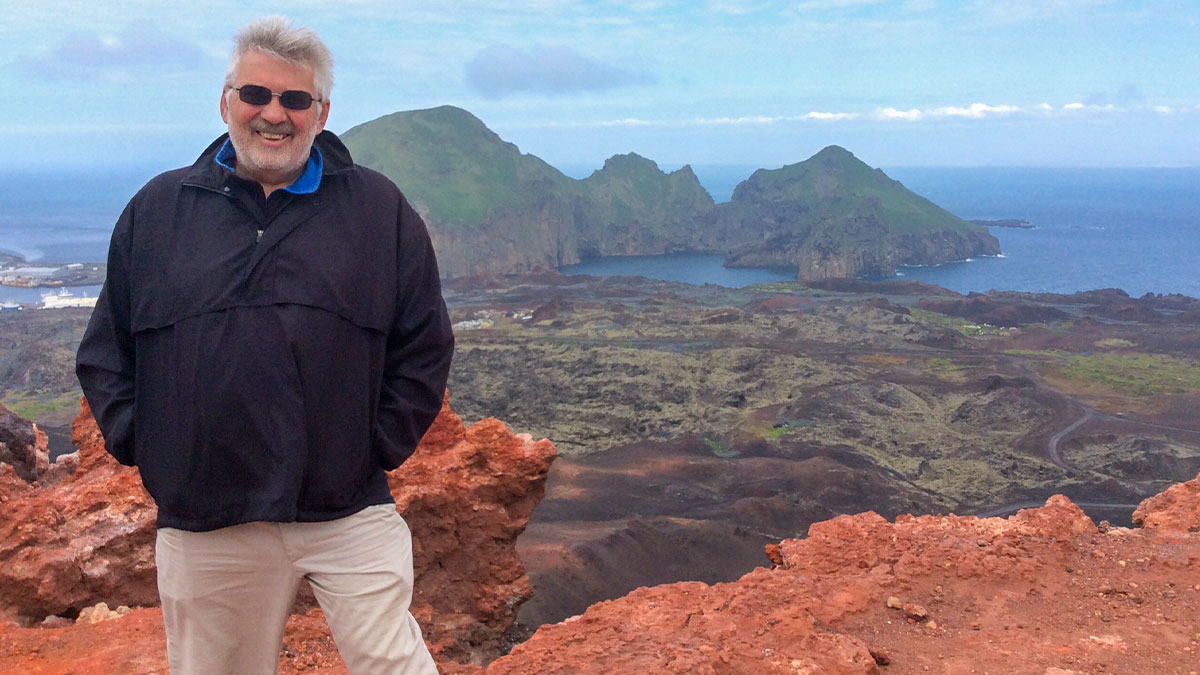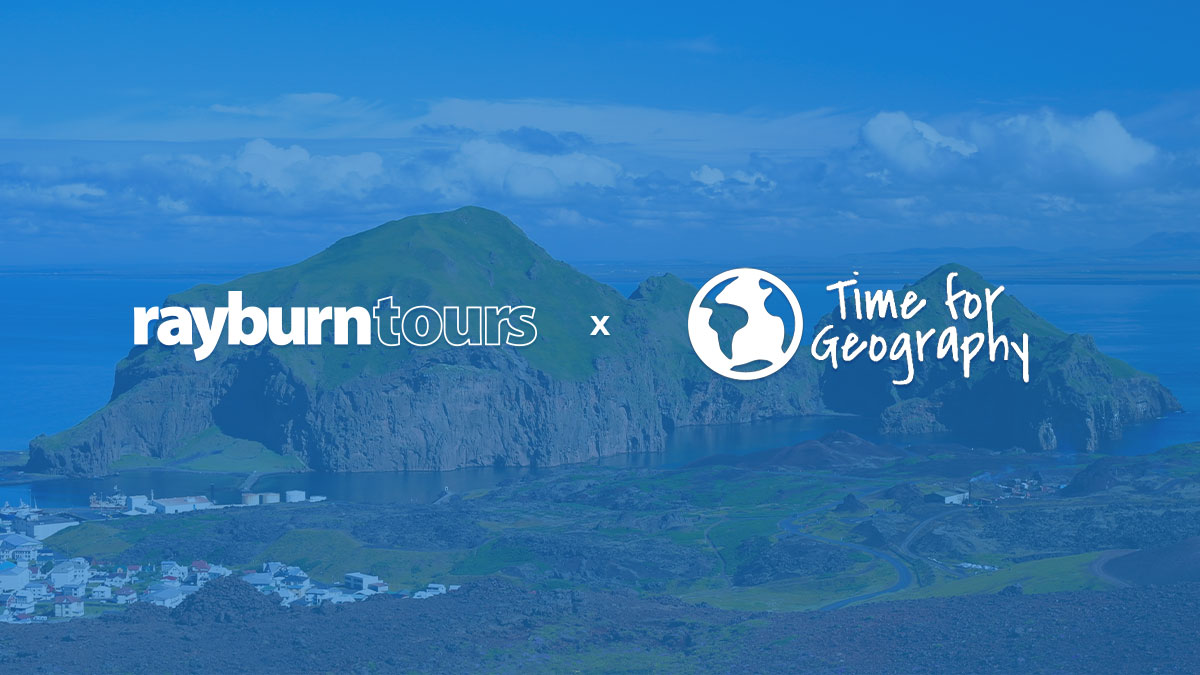School Geography Trips to Iceland
An extraordinary landscape with endless adventure!
- Art
- Science
A land where the elements dance together, a transformative journey into natures wonders. With school geography trips to Iceland, students can fully immerse themselves within the ‘Land of Fire and Ice’ experiencing an adventure of a lifetime. Explore the abyss of lava tunnels, discover powerful geysers, hike the glistening glaciers and spot the dancing northern lights. Iceland school trips promise eye-opening and unforgettable geographical adventures!
Embark on a magical day trip to the breathtaking Golden Circle, or wade through the azure waters of the Blue Lagoon. Why not extend your Iceland geography school trip with a visit the island of Heimaey, a captivating location that brims with enchantment, legends, and the personal stories of the 1973 Eldfell eruption?
If you’re thinking of planning school trips to Iceland, now is the time to get in touch with our team of experts to discuss your tour objectives!
Our Recommended Itinerary
Here’s what your trip could look like
Day 1
Flight to Iceland, meet your Field Study Tutor and explore Reykjanes Peninsula
Reykjanes Geopark, including Bridge Between Two Continents, Gunnuhver, Reykjanes Lighthouse and Krysuvik
Late afternoon visit to the Blue Lagoon, followed by meal at local pizzeria
Day 2
Golden Circle day, including Secret Lagoon and Fridheimar Tomato Greenhouse
Gullfoss, Geysir and Thingvellir National Park
Evening meal at accommodation and quiz
Day 3
LAVA Centre, Skogafoss, Reynisfjara
Glacier hike on Solheimajokull, Eyjafjallajokull Information Point, Seljalandsfoss
Evening meal at accommodation and study time or activity
Day 4
Hellisheidi Geothermal Power Station, Natthagi Valley/Fagradalsfjall eruption site
Transfer to Keflavik airport for flight home
A typical quote is based on a 4 day, 3 night flight tour for 44 passengers (+4 free places +1 Field Study Tutor) travelling in October 2025 and includes, subject to availability:
- Field Study Tutor
- Return flights from UK to Iceland
- Coaching for the duration of your tour
- Full board accommodation
- Travel insurance
- Free staff place ratio 1:10
- 24/7 support
- Vamoos travel app & info pack
- Tailor-made itinerary
- Motorway tolls and taxes
- VAT
Optional Extras
- Hoodies and Polo Shirts
Bringing the case study of Heimaey to life!
Your Extra Day to Heimaey
Day 1
Flight to Iceland, meet your Field Study Tutor and explore Reykjanes Peninsula
Reykjanes Geopark , including Bridge Between Two Continents, Gunnuhver, Reykjanes Lighthouse and Krysuvik
Late afternoon visit to the Blue Lagoon, followed by meal at local pizzeria
Day 2
Golden Circle day, including Secret Lagoon and Fridheimar Tomato Greenhouse
Gulfoss, Geysir and Thingvellir National Park
Evening meal at accommodation and quiz
Day 3
Ferry crossing over to Heimaey . On arrival set off on foot to explore 1973 lavas or take bus tour of the Island. Continue on foot to climb to the top of Eldfell volcanic crater (guided or self guided)
Visit Eldheimer Museum . Then take a tour around the island or go for a swim in the local pool.
Return ferry crossing
Day 4
LAVA Centre, Skogafoss, Reynisfjara
Glacier hike on Solheimajokull, Eyjallajokull Information Point, Seljalandsfoss
Evening meal at accommodation and study time or activity
Day 5
Hellisheidi Geothermal Power Station, Natthagi Valley/Fagradalsfjall eruption site
Transfer to Keflavik airport for flight home
Arrives in the UK
Excursions in Iceland
Browse a selection of our favourite excursions
Accommodation
Popular places to stay in Iceland
- Outdoor, heated swimming pool and jacuzzis
- Fantastic games room
- Within walking distance of shops and restaurants
- Games room
- Outdoor Swimming Pool
- Wi-Fi
- Large group dining room
Customer feedback:
“The location of Hotel Ork was excellent, being at the centre of the Golden Circle and sites easily accessible. The outside pool, communal areas were a real bonus and meant that our evening itinerary was easy to organise.”
Ripley St Thomas Church of England Academy
- Enjoy some friendly competition in the well-equipped games room
- Go for a swim in the outdoor pool
- Visit the local shops and pick up some Icelandic treats
- Short stroll from the centre of Reykjavik
- 5 minutes from Laugardalslaug swimming pool
- Within walking distance of cafes and restaurants
- Triple, twin and single rooms
- Wi-Fi
- Customer Feedback: "A very friendly and accommodating hotel. The buffet style breakfast and food is ideal." Saints Peter & Paul Catholic College
- Buffet breakfast
- Restaurant and bar
- Wi-Fi
- Tuck into the delicious buffet breakfast
- Relax with a drink in the bar
- Go for a swim at the nearby Laugardalslaug pool
- Explore the city centre of Reykjavik by foot and grab a bite to eat
- Beautiful, rural surroundings
- Ideal for stargazing and spotting the Northern Lights
- Sole occupancy available for larger groups
- Nearby swimming pool
- Wi-Fi
- Customer Feedback: "Ran by a lovely family who gave us a short little introduction to Icelandic culture every evening!" Haygrove Academy
- Customer Feedback: "This is hotel we will use repeatedly on future trips!" Stewart's Melville College
- Dining and study areas
- Indoor and outdoor games
- Nearby swimming pool
- Wi-Fi
- Relax in the dining and study areas
- Team up and play some games
- Head over to the nearby swimming pool
- Spend a night stargazing and looking out for the Northern Lights
Curriculum Information
Perfect for all ages and stages of secondary education
-
Curricular Links
- Changing Places
- Climate Change
- Coastal Systems & Landscapes
- Cold Environments
- Ecosystems & Biodiversity
- Geographical Skills
- Glacial Systems & Landscapes
- Globalisation & Global Systems
- Natural Hazards
- Plate Tectonics
- Population
- Resource Management
- River Systems & Landscapes
- Rocks, Weathering & Soil
- Rural Environments
- Tourism
- Urban Environments
- Water & Carbon Cycles
- Weather & Climate
Cross Curricular Trips to Iceland!
Creating further opportunities for students to explore the wonders of Iceland…
Iceland is a fascinating country to visit whatever your area of interest or expertise and there are no end of learning opportunities, that cover a whole host of subjects. Iceland isn’t just about Geography – it’s about so much more! Humanities, Science and Photography, trust they’re all covered off on a cross curricular trip to Iceland!
Discover more about this tour
Special Feature
FREE teaching resources and the chance to sign up for more!
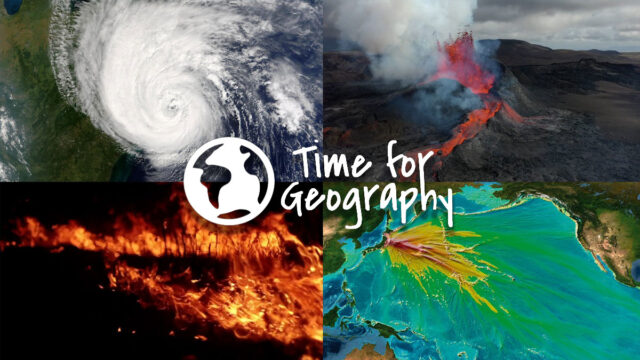
Brand New!- The Isle of Fire Series, 1973 Eldfell Eruption by Time for Geography
Bringing an inspirational case study to life! Inspiring stories, fascinating research and spectacular volcanic landscapes!
Discover more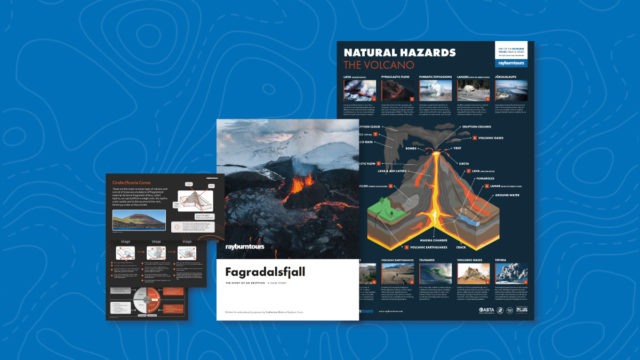
The Iceland Series - The ultimate FREE Geography Teaching Resource
Targeting GCSE & A-Level teaching. You can also sign up to hear about more good stuff like this!
Discover more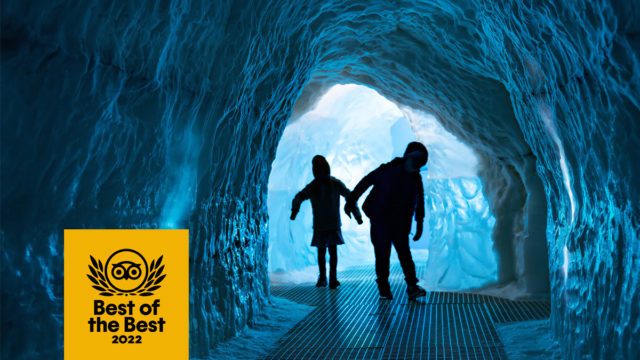
Must see - Perlan, voted 'Best of the Best' 2022
Perlan was always a fantastic excursion and a must see when visiting Iceland - now you can't ignore…
Discover moreOther Destinations
Because choice is what makes life interesting
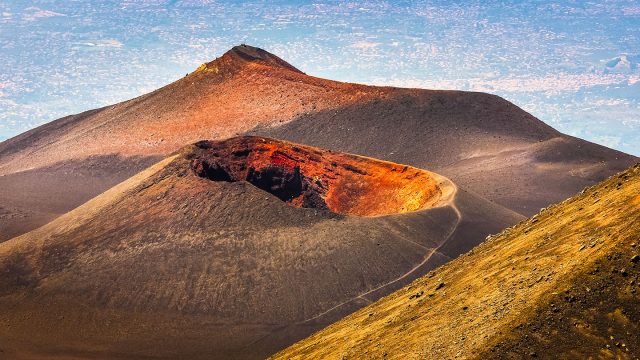
Sicily
Teaching tectonic hazards and volcanic landscapes but don't fancy braving Iceland's harsh weather? Try the Mediterranean, visit Sicily!
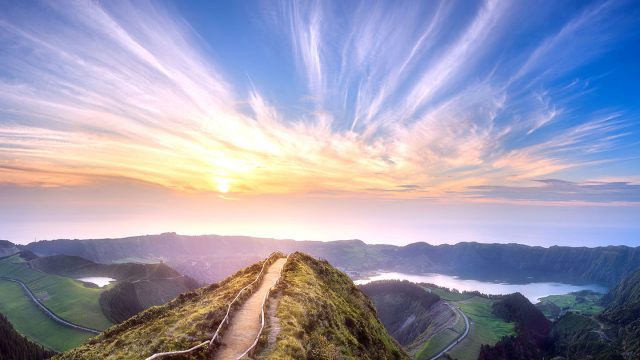
The Azores
Want unforgettable landscapes and real-life examples to demonstrate energy resources, tourism, sustainability and more? Consider the Azores!
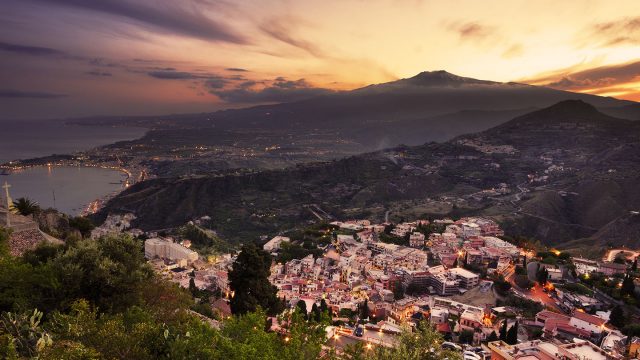
Bay of Naples
For a Mediterranean adventure without leaving the mainland try the Bay of Naples! Sunshine, gelato, volcanos, only closer…
Real experiences
Why schools choose us
FAQs about this tour
Find the answers to some of our most frequently asked questions.
-
When do you recommend travelling to Iceland?
Anytime between February and November. It when the weather is most settled.
-
When would you say we would have the best chance of seeing the Northern Lights?
It goes without saying that it’s not guaranteed – but we would say travel between September and April for the best chance of seeing this amazing natural phenomenon!
-
Is it better to visit Iceland in winter or summer?
Both times of year are great! They offer very different experiences and landscapes – cold and snowy or lush and green. Whichever your school prefers!
-
Can you visit Iceland on a budget when planning a Geography School Trip?
Yes, you don’t need a huge budget to visit Iceland on a school trip, as long as you can be flexible on dates. It’s always much cheaper to travel during term time if this is possible for your school. It’s also much quieter so you have more space and freedom to explore the stunning landscape of Iceland – school trips to Iceland cannot be beaten.
-
How do we get to Heimaey?
There is a short ferry crossing from Landeyjahöfn to Vestmannaeyjar that takes around 35-40 minutes.
-
What locations and geological features will students visit, and how do they support learning objectives?
On the Reykjanes Peninsula and Geopark, students are introduced to Iceland’s dramatic tectonic setting. Here they can walk across the Bridge Between Continents, literally standing on the boundary between the Eurasian and North American plates. Geothermal features such as the bubbling mud pools at Gunnuhver and the steaming vents of Krýsuvík bring volcanic and hydrothermal processes to life, while young lava fields and rugged coastlines highlight the interaction between volcanism and erosion. These experiences directly reinforce understanding of plate tectonics, rifting, and landform development.
The Golden Circle is a highlight of the trip, combining several key sites. At Thingvellir National Park, students can observe a rift valley formed by plate separation, supporting learning about tectonic plate boundaries. The Geysir geothermal area demonstrates hydrothermal activity with erupting geysers and steaming hot springs, offering a vivid case study of geothermal processes. At Gullfoss waterfall, students study fluvial erosion, waterfall formation, and river systems in action, while visits to the Secret Lagoon or Fridheimar greenhouse connect physical geography to human activity, showing how geothermal energy is used for bathing and agriculture.
On the South Coast, geography students encounter a mix of glacial, fluvial, and coastal processes. The powerful Skogafoss and delicate Seljalandsfoss waterfalls reveal the influence of erosion and geology on waterfall formation. A guided walk on Solheimajökull glacier provides first-hand evidence of glacial retreat and meltwater channels, linking to climate change and glacial systems topics. At Reynisfjara beach, students see black volcanic sands and towering sea stacks, which illustrate the impact of wave action and coastal erosion in a volcanic setting. The nearby Eyjafjallajökull visitor centre gives context to the 2010 eruption, linking physical geography with human impacts and hazard management.
At the Hellisheidi Geothermal Power Station, students gain insight into how Iceland harnesses its unique geology for renewable energy. By exploring the power plant’s systems and outputs, they see how geothermal energy is converted into electricity and hot water, reinforcing curriculum objectives around energy resources, sustainability, and human–environment interaction. This case study contrasts sharply with fossil fuel reliance in other countries and helps students evaluate the benefits and challenges of renewable energy.
A visit to the Blue Lagoon demonstrates another human use of geothermal resources, this time through tourism and leisure. Students learn how heated groundwater, originally drawn from a geothermal power plant, has been developed into one of Iceland’s most famous tourist attractions. This location raises valuable questions about sustainable tourism, environmental impacts, and the economic role of natural features, making it a strong link to human geography.
The Fagradalsfjall eruption site and Natthagi Valley allow students to explore a newly formed volcanic landscape. They can walk over solidified lava flows, study craters, and observe the scale of recent eruptions. This reinforces concepts of volcanic hazards, landform development, and risk management, while emphasising how active Iceland’s geology remains today.
The interactive LAVA Centre builds on these field experiences by helping students visualise the processes behind earthquakes, eruptions, and rifting. Through simulations and models, students gain a clearer understanding of the internal structure of the Earth, magma movement, and hazard monitoring. This strengthens their theoretical knowledge and connects classroom learning to real-world evidence.
An optional excursion to Heimaey in the Westman Islands introduces students to the 1973 eruption of Eldfell. Here, they can see how lava nearly engulfed the town, study how the community responded, and explore how the eruption reshaped both the island’s landscape and its economy. This provides a case study of natural hazards and human resilience, highlighting the close relationship between people and environment in volcanic regions.
-
How does the itinerary link to the GCSE Geography curriculum?
The Reykjanes Peninsula & Geopark section directly connects with the GCSE topic of plate tectonics and volcanic/tectonic landforms. Students can see faulting and rifting in the landscape (e.g. the Bridge Between Two Continents), active geothermal features (hot springs, mud pools, lava flows) and understand how the Mid‐Atlantic Ridge exerts influence on land formation in Iceland.
Moving on to the Golden Circle itinerary – Thingvellir, Geysir, Gullfoss, etc. – this provides concrete examples for hydrothermal activity, river systems & landscapes, and erosion. Gullfoss waterfall demonstrates river erosion, waterfall profiles and how rivers can shape land; Geysir geothermal area shows the release of heat and geothermal water, supporting thermal features and geothermal power themes; Thingvellir helps students visualise plate boundary effects on landscapes.
The glacier visits (notably Sólheimajökull glacier) are central to the GCSE topic of glacial systems and landscapes, especially showing glacial retreat, moraine formation, and glacier dynamics. These also tie into climate change, since students can observe evidence of ice loss or changing glacier extent.
The itinerary’s inclusion of Hellisheidi Geothermal Power Station (and other geothermal areas) serves as a case study in renewable energy sources. Students learn how geothermal energy is harnessed in Iceland: the engineering, benefits, cost, sustainability and environmental impact, which matches the GCSE requirement to understand different energy resources and their management.
Visits to recent volcanic sites (e.g. Fagradalsfjall eruption site, Eldfell on Heimaey) and features such as geysers hot springs or lava fields are directly relevant to natural hazards: understanding volcanic hazards, risk, monitoring, mitigation, and also considering the human response and recovery.
Coastal locations (Reynisfjara black sand beach, sea stacks, cliffs) link to the GCSE topic of coastal systems and landscapes. Students see wave action, erosion (e.g. arches, stacks, cliff retreat), sediment transport, and volcanic influence on coastal landforms.
Finally, many of the sites contribute to broader cross-cutting themes in the GCSE specification: weather and climate (seeing how Iceland’s climate shapes its glaciers, weathering, landscapes), resource management, water and carbon cycles, ecosystems, tourism (how natural features are used by people and the tensions between conservation and use).
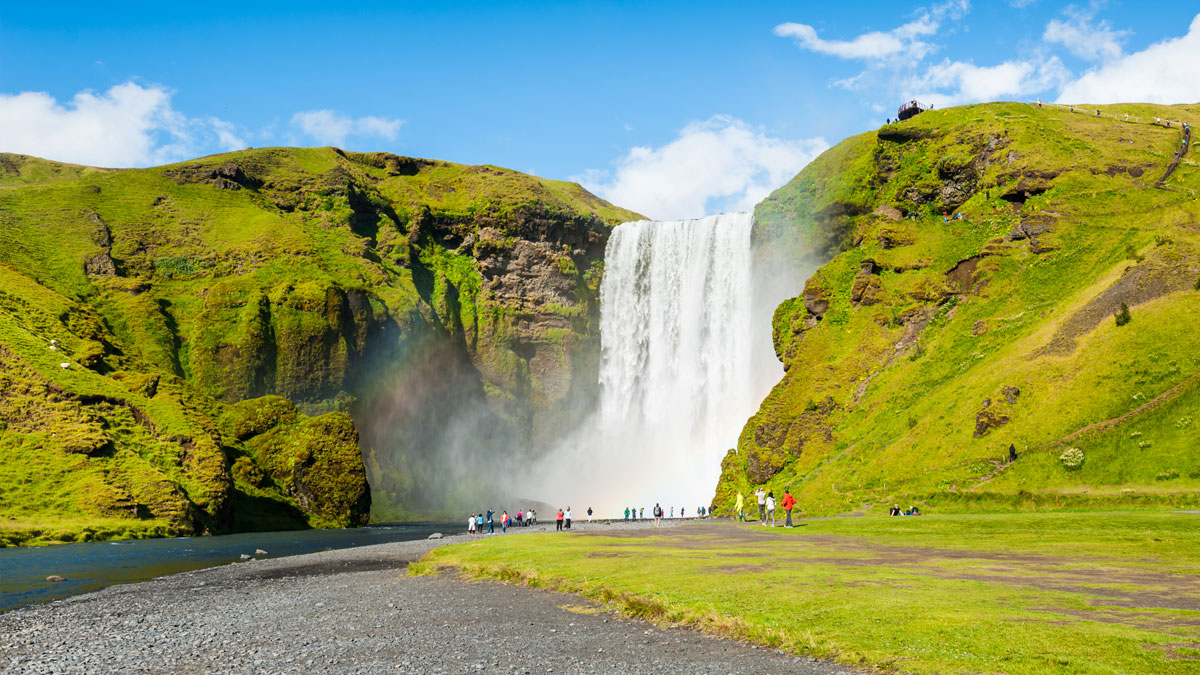
Travel in safe hands
Your safety is of the utmost importance to us and we monitor the safety aspects of all of our tours to ensure you have a memorable experience for all the right reasons.
Discover More




